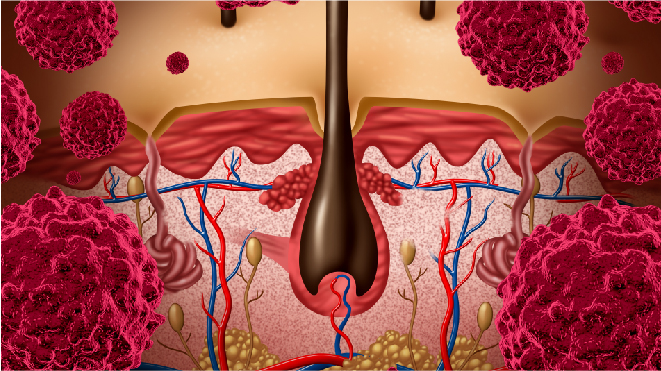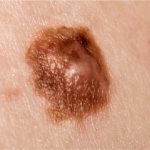Skin cancer can develop in any part of the body, but most often it is developed on skin that is more exposed to the UV radiation. Skin cancer occurs to people of all skin tones. Read more about skin cancer here.
How is skin cancer staged?
Staging standardizes the process of describing how much the cancer has spread in the body. Staging of cancer helps the doctors figure out how much the cancer has spread and determine its best treatment and also helps calculate survival statistics. The lower the number of the stage, the less is the cancer has spread, with early stages being 1 and the most advanced stage being 4. Read more about stages of skin cancer here.
TNM method:
Most cancers that have tumours are staged using a staging system called TNM system and the same is used for skin cancers. The size of the primary tumour (T), the presence of cancerous lymph nodes (N) and how far the skin cancer has spread to a different part of the body (M) can be described using the TNM system.
High risk features:
The following are the high risk factors of skin cancer:
- The cancer is more than 2 mm thick in diameter
- It has grown into the lower dermis
- It has grown into the space around a nerve
- It started to spread to the ear or lip
- The cells are poorly differentiated or undifferentiated when seen in a microscope
Read more about risk factors of skin cancer here.
Stage IV non melanomas:
Basal cell carcinoma is rarely staged as these are almost always cured before they spread to other parts of the body, however in the cases where it needs to be staged, TNM method of staging is used. Squamous cell carcinomas are staged similarly.
In stage IV, the cancer has spread into the spine, lower part of the skull or the ribs or it has spread to a lymph node more than 3 cm in size or to an internal organ such as the lungs.
Treatment of stage IV basal cell carcinomas:
Surgery is the preferred treatment method for skin cancers, however if the cancer has spread beyond the primary location, below are the treatment methods available for treating localized basal cell carcinomas:
- Simple excision
- Mohs micrographic surgery
- Targeted therapy with a signal transduction inhibitor
- A clinical trial of a new treatment
Treatment of stage IV squamous cell carcinomas:
Surgery is the preferred treatment method for skin cancers, however if the cancer has spread beyond the primary location, below are the treatment methods available for treating localized squamous cell carcinomas:
- Chemotherapy
- Retinoid therapy
- Immunotherapy
- A clinical trial of a new treatment
Stage IV melanoma:
In stage IV of skin cancer, the cancer has spread to other parts of the body away from the primary tumour and has metastasized to distant organs. The organs that melanoma usually spread to are:
- lungs
- liver
- bones
- brain
- abdomen
- distant lymph nodes
Treatment options:
The treatment for stage IV skin cancer depends on the organs the cancer has metastasized to, and the extent to which the cancer has spread. The following are the treatment options for stage IV melanoma.
- Immunotherapy
- Targeted therapy
- Chemotherapy
- Palliative therapies can include surgery or radiation therapy
- Systemic or regional chemotherapy




